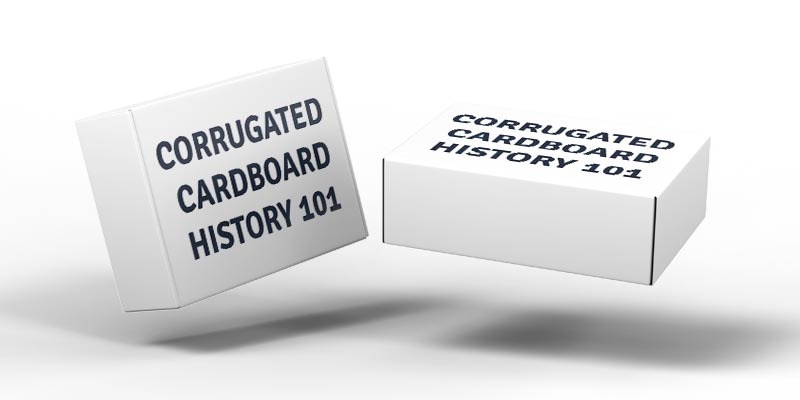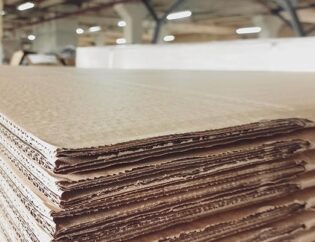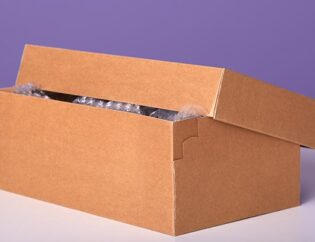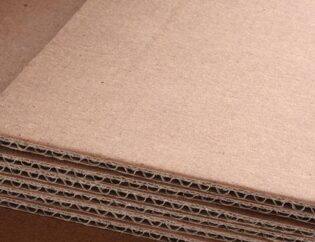
Corrugated Cardboard: The Essential Packaging Solution for Diverse Industries
Corrugated cardboard is a cornerstone of modern packaging, integral to industries ranging from food and beverage to e-commerce and agriculture. Its versatility and strength make it the go-to material for protecting and transporting goods worldwide. This article delves into the history, manufacturing process, applications, and future trends of corrugated cardboard, with a special focus on BC Box Manufacturing Ltd., a leading supplier serving diverse markets across Canada.
History of Corrugated Cardboard
Early Developments in Packaging
The origins of corrugated cardboard can be traced back to the 19th century when the need for a more durable packaging material became apparent. Traditional packaging methods were often insufficient for protecting goods during transport.
Evolution of Corrugated Material
The invention of corrugated material revolutionized the packaging industry. Initially used to line hats in the 1850s, it wasn’t until 1871 that corrugated paper was patented for use in shipping. This innovation paved the way for modern packaging solutions.
Key Milestones
Significant advancements in corrugated cardboard include the introduction of single-wall and later double-wall corrugated boards, which provided increased strength and durability. Over time, improvements in production techniques and materials further enhanced its capabilities.
Manufacturing Process
Materials Used
Corrugated cardboard is primarily made from a combination of paper-based materials, including linerboard and medium. These materials are sourced from renewable forests, emphasizing the sustainable nature of the product.
Corrugation Process
The manufacturing process begins with the corrugation of the medium, creating a wavy pattern that provides structural strength. This is followed by the lamination of linerboards on both sides of the corrugated medium.
Cutting and Shaping
After the corrugated board is formed, it is cut and shaped according to specific requirements. This stage allows for the customization of boxes to fit various product dimensions and uses.
Quality Control Measures
Quality control is crucial in ensuring the durability and performance of corrugated cardboard. Each batch undergoes rigorous testing for strength, moisture resistance, and other critical factors.
Types of Corrugated Cardboard
Single-Wall Corrugated
Single-wall corrugated cardboard consists of one layer of fluted material sandwiched between two linerboards. It is commonly used for lightweight packaging.
Double-Wall Corrugated
Double-wall corrugated cardboard features two layers of fluted material, offering increased strength and protection. It is ideal for heavier items and industrial applications.
Triple-Wall Corrugated
Triple-wall corrugated cardboard provides maximum strength and is often used for the most demanding packaging needs, such as heavy-duty industrial products.
Applications in Industrial Markets
Heavy-Duty Packaging
In industrial markets, corrugated cardboard is essential for heavy-duty packaging. Its ability to withstand pressure and protect contents during transport makes it indispensable.
Custom Industrial Solutions
BC Box Manufacturing Ltd. offers tailored solutions to meet the unique needs of various industries. Their expertise ensures that packaging is optimized for both protection and efficiency.
Case Study: BC Box Manufacturing Ltd.
A leading provider in the industrial sector, BC Box Manufacturing Ltd. has developed innovative packaging solutions that cater to the specific needs of their clients. Their focus on quality and customization has earned them a reputation for excellence.
Applications in Food and Beverage
Food Safety Standards
Corrugated cardboard used in the food and beverage industry must adhere to stringent safety standards. The material is designed to be hygienic and safe for direct contact with food products.
Customization for Branding
Packaging is not just about protection; it’s also a key element of branding. BC Box Manufacturing Ltd. provides customized packaging solutions that enhance brand visibility and appeal.
Case Study: Food Packaging Solutions
One notable example is BC Box Manufacturing Ltd.'s collaboration with a leading food company to develop packaging that meets both safety standards and brand objectives. The result was a highly successful packaging solution that boosted both safety and sales.
Applications in E-commerce
Impact on Shipping and Logistics
The rise of e-commerce has significantly increased the demand for corrugated cardboard. Its lightweight nature and durability make it ideal for shipping a wide range of products.
Sustainability in E-commerce Packaging
Sustainability is a major concern in e-commerce. Corrugated cardboard is a recyclable material, making it a preferred choice for companies looking to reduce their environmental footprint.
Applications in Agricultural Markets
Protecting Fresh Produce
In the agricultural sector, corrugated cardboard is used to protect fresh produce during transport. Its ability to maintain the integrity of perishable items is critical.
Innovative Agricultural Solutions
BC Box Manufacturing Ltd. has developed specialized packaging solutions for the agricultural market, ensuring that products arrive at their destination in optimal condition.
Environmental Impact
Sustainability of Corrugated Cardboard
Corrugated cardboard is one of the most sustainable packaging materials available. It is made from renewable resources and is highly recyclable, contributing to a circular economy.
Recycling and Reusability
Recycling is a key component of the corrugated cardboard lifecycle. BC Box Manufacturing Ltd. actively promotes recycling initiatives to ensure that their products have minimal environmental impact.
Case Study: Recycling Initiatives
BC Box Manufacturing Ltd. has partnered with various organizations to enhance recycling efforts, demonstrating their commitment to sustainability.
Expert Insights
Quotes from Industry Experts
“Corrugated cardboard remains the backbone of the packaging industry due to its versatility and environmental benefits,” says an industry expert. These insights underscore the importance of corrugated cardboard in various sectors.
Insights on Market Trends
Market trends indicate a growing demand for sustainable packaging solutions, with corrugated cardboard leading the way due to its eco-friendly properties.
Future Outlook for Corrugated Cardboard
Emerging Trends in Packaging
Innovations such as water-resistant coatings and biodegradable liners are set to revolutionize the use of corrugated cardboard in packaging.
Innovations in Materials
The future of corrugated cardboard lies in developing even more sustainable materials, including those derived from recycled sources and alternative fibers.
The Future of Sustainable Packaging
As environmental concerns continue to rise, corrugated cardboard is poised to play an even greater role in the global shift towards sustainable packaging solutions.
Practical Tips for Businesses
Selecting the Right Type of Corrugated Cardboard
Businesses must consider factors such as product weight, fragility, and transportation conditions when selecting the appropriate type of corrugated cardboard.
Cost-Effective Packaging Solutions
Optimizing packaging design can lead to significant cost savings. BC Box Manufacturing Ltd. offers expert guidance in creating cost-effective packaging solutions without compromising quality.
Best Practices
Implementing best practices in packaging can enhance product protection, reduce waste, and improve customer satisfaction.
Read Benefits from the Corrugated Packaging Alliance
Conclusion
Corrugated cardboard is a versatile, sustainable, and essential material in the packaging industry. From its early origins to its modern applications, it continues to evolve to meet the demands of various markets. BC Box Manufacturing Ltd. exemplifies the innovation and commitment to quality that drives the industry forward. As businesses and consumers alike prioritize sustainability, corrugated cardboard remains a critical component of the global packaging landscape.









